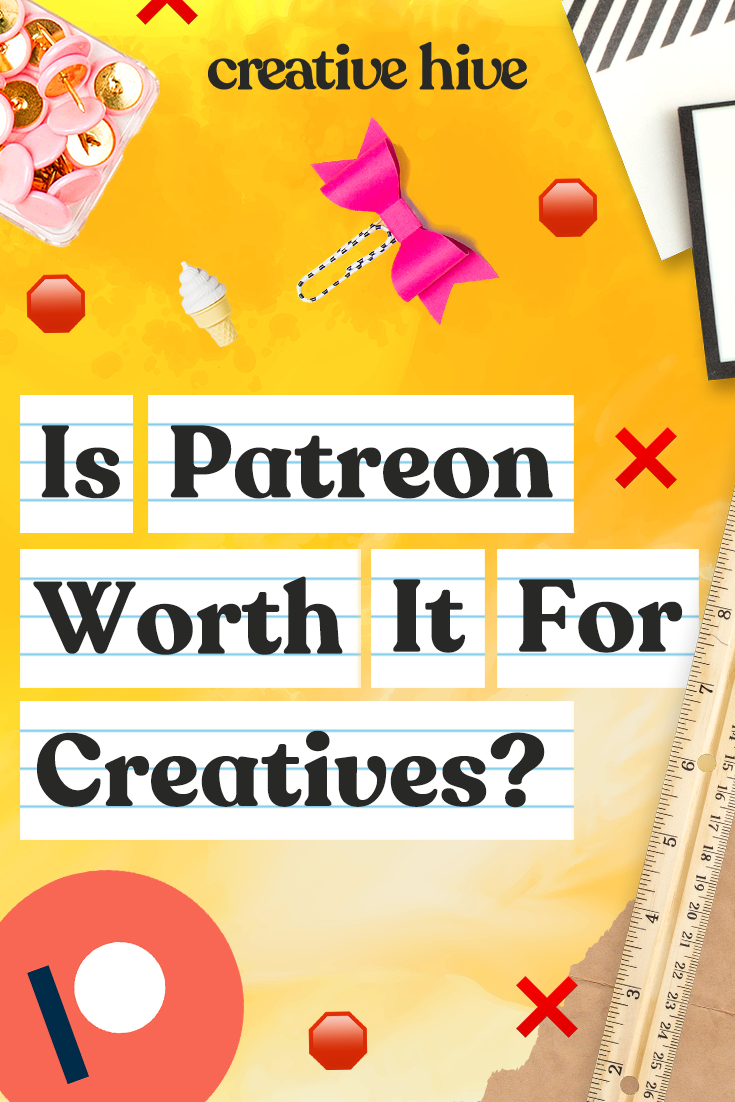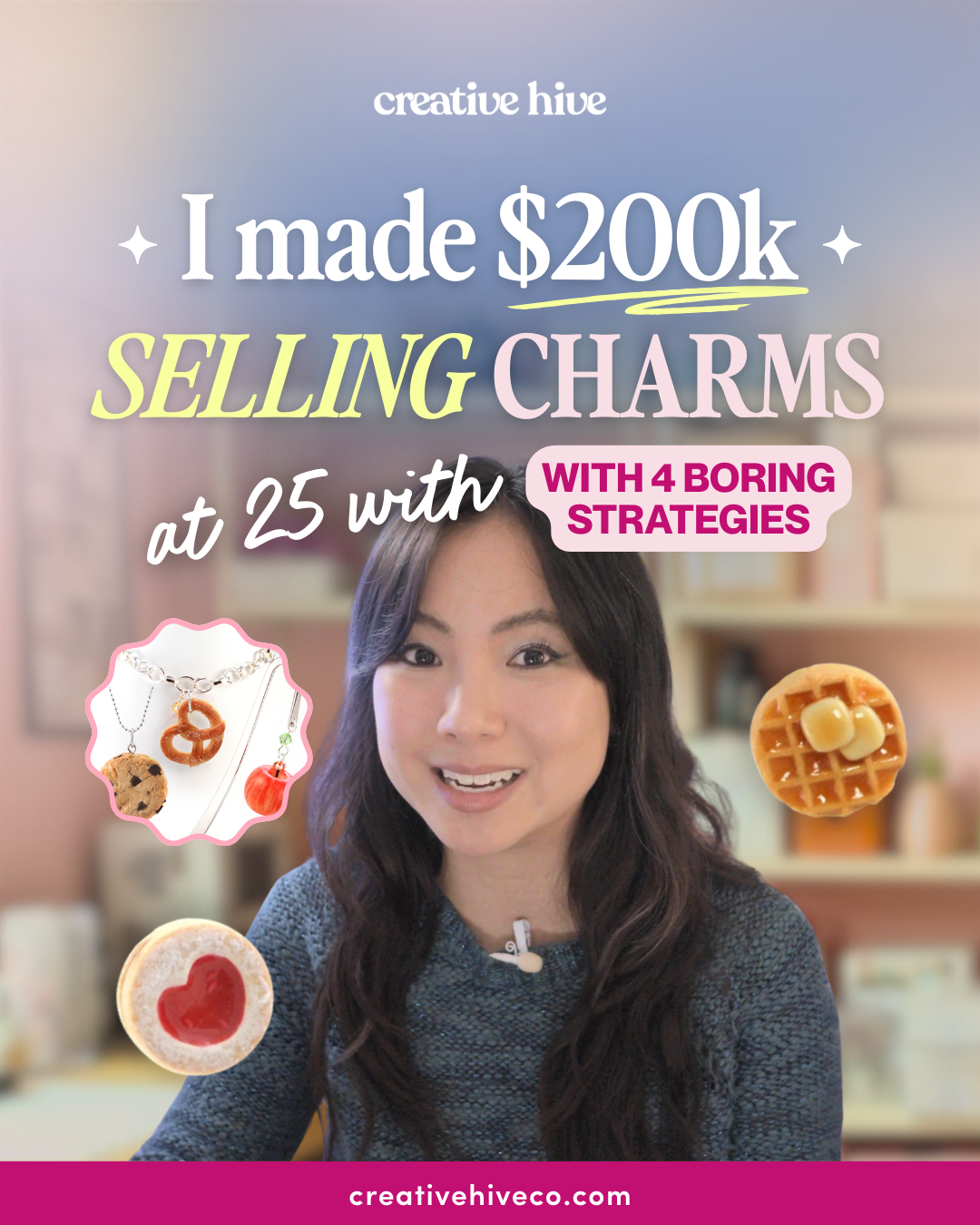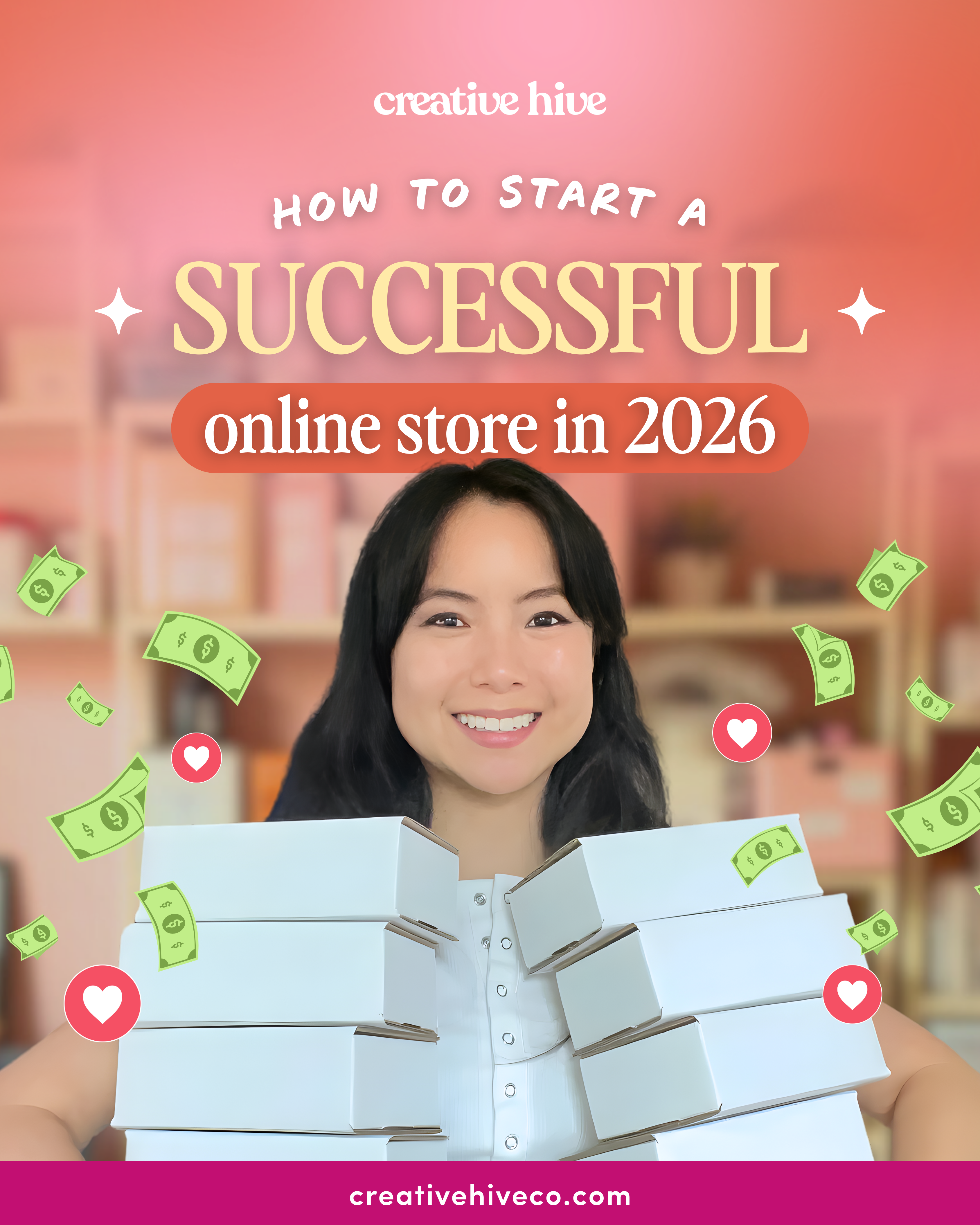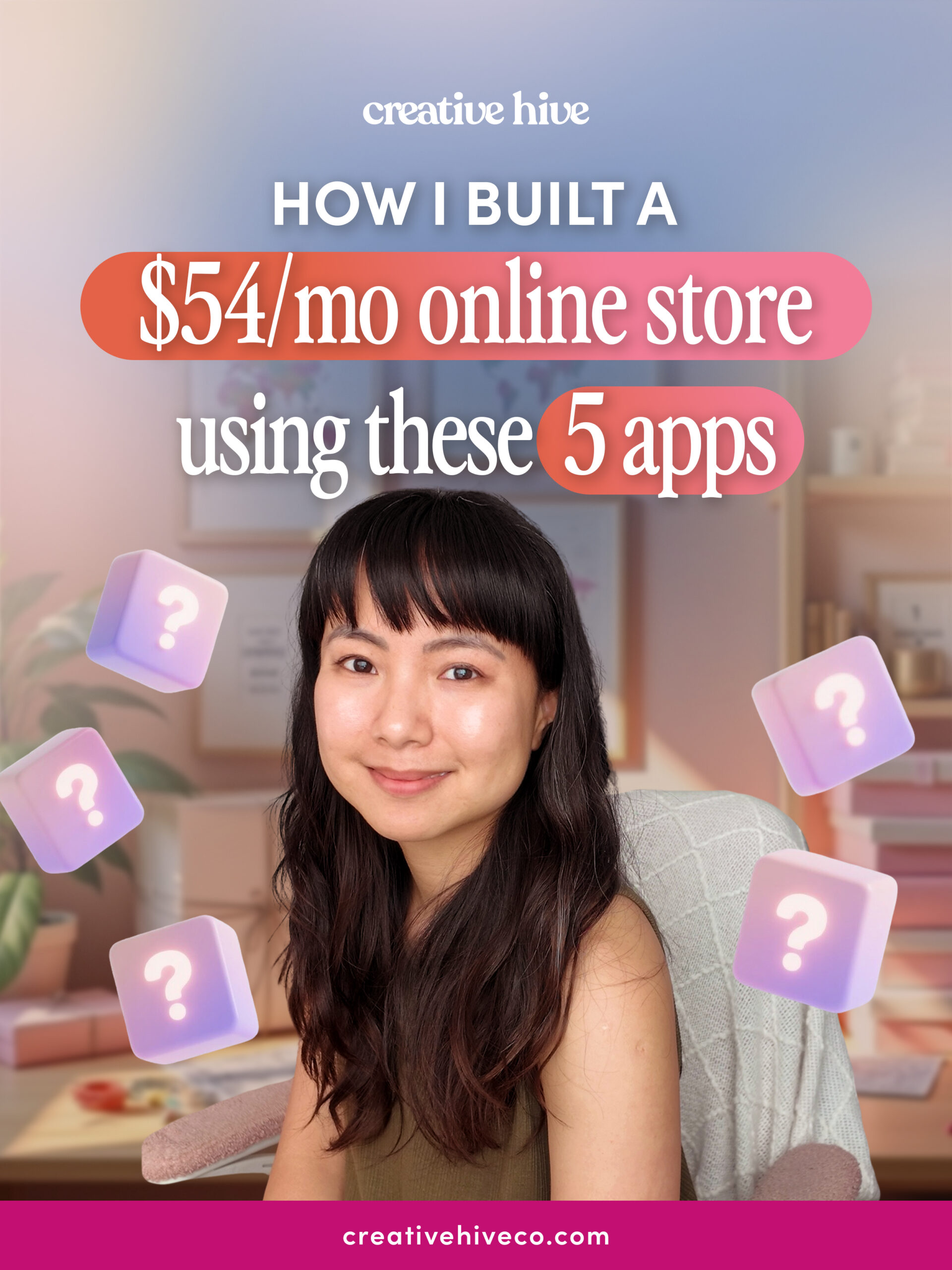I want to help you build a sustainable, profitable handmade business that makes you consistent income and sales. I only ever teach or recommend marketing, social media, pricing, production and branding tips that I’ve personally used successfully in my own 7-figure handmade businesses.
I'm Mei, from Los Angeles!
Read More
Popular Posts You'll Love
Looking for something?
Categories
starting a business
get more traffic
running a business
make more sales
branding
growing a business
mindset & productivity
podcasts
pricing & money
product photography
reviews
selling on etsy
selling on amazon
social media
selling wholesale
- Facebook0
- Twitter1
- Pinterest20
- 21shares
If you’ve been thinking about using Patreon for your creative business, read this post first. I’m going to be sharing with you my thoughts about using Patreon, why it’s probably going to be a huge time-waster, and why it may not be the best idea for you.
Before I dive in, I need to preface this post by saying that I have no experience selling on Patreon, but I do have 14 years of experience selling online, and I’ve run a very similar business model to Patreon in the past for several different projects.
If you’ve already decided that you want to sell on Patreon and you want a step-by-step tutorial on how to do that and how to make the most out of it, this is not the post for you. If you’re wondering if Patreon is worth your time and is something that you can make a living from, or at least some reasonable amount of income from then keep reading.
What is Patreon?
Patreon is basically a membership-based model. Some examples of recurring, membership-based business models that you’re probably already familiar with, are things like:
- Netflix
- Magazine subscriptions
- Your gym membership
- Subscription boxes like Fabfitfun which is a subscription box that includes products like beauty products, skin care, accessories, and other kinds of wellness products.
There are thousands of different kinds of subscription boxes out there for every different kind of niche and market. It’s recurring income, which I know is a huge appeal for people thinking about starting on Patreon.
As creatives, I know that trying to monetize your creativity and your skills is a roller-coaster and so creating consistent streams of income is super important for us.
It is a huge perk to have income that you know you can predict in the future. No one likes to be left wondering when their next sale is going to come in.
However, despite Patreon’s inherent appeal, Patreon, or basically any stream of income that gives you recurring sales, also has some major drawbacks that I want you to be aware of first before you invest your time into building that out.
Drawback #1: Subscription Products are the First Expense that People Cut
The first major drawback is subscription products are the first expense that people will probably cut when they’re looking to lower monthly expenses. The psychology of this is pretty interesting but it’s worth mentioning because it’s not intuitive.
Even though a person’s monthly expenses might include some larger one-time expenses, psychologically, people are more likely to decide to stop expenses that are recurring. The logic is that they could save more money over a longer period, even though it’s a much smaller cost.
One thing worth mentioning is that recurring income is not necessarily the same thing as a payment plan. It can have the same effect of giving you consistent income, however a payment plan has a fixed ending where you’re just paying smaller chunks over time towards the total sum of a larger purchase,
Recurring income has no real end.
One inherent problem of subscriptions and memberships like Patreon and signing up for things like Netflix or subscription boxes for makeup or fashion, is that these things are usually not necessary for your day-to-day life.
People really aren’t relying on these things for survival. What they do is give you entertainment, comfort, and some fun in your life. I think that is a large reason why, when people are looking to cut down on monthly expenses, that these recurring expenses are usually the first to go.
Unless, of course, you can justify your monthly fee as being something that people will really miss out on if they cancel it.
In my examples before, people are probably less likely to want to cancel your Netflix subscription because it’s such a major part of people’s lives. They’re more likely to cancel a makeup subscription box.
I used to subscribe to one of those makeup subscription boxes where every month I would get sample sizes of random makeup products. Unfortunately, a lot of it went to waste because I couldn’t use them fast enough, some of the products just weren’t relevant to me, or suitable for me.
You can bet my time with this subscription box was very short-lived.
Drawback #2: Creating Retention Strategies
Whatever it is you’re selling in exchange for people’s monthly fee to you, you are required to create some sort of product or service or content for the other person to consume.
Because you’re most likely only creating one thing every month, it’s likely you cannot make every subscriber happy. There are going to be some pieces of your content or product that you create a reminder that isn’t going to be a good fit for a small percentage of your audience.
This is drawback number two and that is creating retention strategies to encourage your Patreon supporters to stay with you longer and not cancel.
You now have the extra worry of needing to keep your audience happy with whatever content you’re giving them.
You have to get creative and create some strategies for keeping people on for as long as possible.
This unfortunately is something most people don’t get right.
There are so many big puzzle pieces you have to worry about when it comes to membership-based models like Patreon.
Number One
You have to think about what it is you’re selling, whether that’s private videos that only your Patreon subscribers get access to, or it’s exclusive services or products, or a private community. This sets you up for either success or failure if you get this part wrong or right.
Number Two
You have to also worry about growing your Patreon base. How do you get new subscribers and new members? You have to do marketing and promotion in order to do that.
Number Three
You also then have to worry about retention which is how to keep the people you’ve already got staying with you for as long as possible.
Most people only think about number one and two and they completely forget or ignore or just are not aware that number three is also equally as important.
At Creative Hive I used to also run a membership for $49 a month you get access to some courses, a private community, and a bunch of other stuff. I was able to get about 200 people to join.
However for every few people that would join my membership for the month, I would also lose some people who would cancel. So with the continuous ebb and flow of people joining and people leaving it felt so difficult to get past that 200 people to join.
This was also the same experience I had when I first launched my subscription product the necklace of the month club at tiny hands. I had 100 people join my subscription when I first launched it, but I struggled to grow it past those 100 people for a whole year.
This is not a terrible thing because who would turn away potentially $5,000 every month, right? However this is where drawback number three comes into play when combined with drawback 2 which makes this membership model quite difficult to pull off effectively.
Drawback #3: You are Required to Turn Into a Content Creator
With most membership models, you are required to turn into a content creator. I don’t know about you, but I don’t like to live my life being tethered to anything if I can help it.
I’m not saying that I don’t like having responsibilities, it’s just that I don’t like needing to be consistent about something in my business.
If you’ve watched any of my videos or if you’ve been following me for some time, you know that a big part of my philosophy when running my businesses is to keep a lot of it automated as much as possible.
When you’re running a Patreon powered business or any other sort of membership business model, you need to constantly be giving your subscribers some sort of content, product or service. I’ve always believed, that unless you are some sort of YouTuber or blogger where you’re already familiar and comfortable with making content consistently, then you’re most likely not already a content creator.
Being a content creator takes a long time, and it’s a lot of time spent making something that you don’t directly get paid for like with your products.
The icing on top is you have to create content consistently and frequently in order to be a good content creator. No one likes a blogger who only blogs once every two months.
Your content has to be good, and in order for it to be good you have to spend a lot of time doing it, and you also have to do it often, which means most of your time gets sucked into creating content and not into making products.
Did you know that for every one of my YouTube videos that I make for you, we invest anywhere between 5 to 10 hours per video?
That includes my time planning the video, thinking about what to say, recording the video, and then my video editor takes hours to edit the video, and then we have to optimize the video giving it descriptions and keywords, and then we have to create all sorts of promotional graphics to help promote this video on other channels like Facebook and Instagram, our blog and on our newsletter.
And I publish two videos a week.
That’s easily 20 hours per week and I’m not monetizing any of these videos with ads.
Do you or can you afford to have 20 hours a week that you set aside to just create free videos like this?
I personally wouldn’t recommend becoming a content creator if you are a handmade maker first and you want to sell your finished physical products online.
I think that is a better way of making an income than becoming a content creator.
Drawback #4: You Have to Prove to the General Public that You Are Worthy
You have to create exclusive content for your Patreon subscribers that the regular public doesn’t get to see, but in order to promote your Patreon in the first place, you have to prove to the General Public that you are an artist worth paying a monthly fee for.
The best way to do that, and how I have seen everyone do it who’s successful with Patreon, is primarily with producing a lot of great, free content.
The people that we know do well on Patreon and that are making four to five figures every month are content creators who already have a super large following online.
Some of your favorite YouTubers that are doing Patreon probably have upwards of tens if not hundreds of thousands of followers on YouTube.
Don’t forget, that didn’t just happen overnight. It took them years to get to that point.
Doing well with Patreon requires you to invest a ton of your time every month and it’s not something that you can easily automate in the future.
You are basically stuck with it and it becomes an obligation you have to fulfill in order to keep your customers happy.
If you’re just starting out, I wouldn’t recommend a membership-based model for you because the dynamics just don’t work out.
It’s a lot of work upfront and consistently every month, for initially just not a lot of money.
We all have a limited number of resources every day, so I believe it’s very important to think wisely about where you spend those resources and that we should all strive to invest your resources and things that are going to pay you the most amount for your time.
This is also called the 80/20 rule that I like to talk a lot about and that my A Sale A Day Business System Course is based off of. I personally don’t want to do things that is going to waste my time or that is going to be very high effort and low return.
Drawback #5: Patreon is Not a Great Way to Make a Living from Your Creative Skill
Patreon is also just generally not a great way to make a living from your creative skill, whatever that may be.
Maybe you’re an artist, or a designer. I’ve seen a lot more money flowing into business models where you are selling a physical product. From the customer’s perspective, that is also a much greater value to them, than just receiving exclusive monthly videos. I mean, it all depends on what you’re selling and what your content is.
But if you’re looking for a way to make money online, you’re going to have faster and more success from turning your skills into a finished product that people can buy.
Even if you are an educator. For example, you teach weaving. I’m not saying you necessarily have to sell the finished weavings as wall decor, although that would be very lucrative and a lot of people will definitely buy those, but as a teacher, you could also sell one-off courses that people pay a one-time fee for in addition to selling kits for weaving projects.
It’s a lot more clean-cut of a business model to do it that way than to run a membership or subscription-based business model.
Having said that, a membership model does make more sense for an educator, than it would for a physical product to maker.
If you do feel like you really want to have the same perks is Patreon where you’re getting recurring income every month, there are other ways you can do that without using Patreon.
Let’s not forget that if you sign up with Patreon they do take anywhere from 5% to 12% commission from your sales, on top of credit card transaction fees.
Yes, there is definitely value in having a platform that does all the techie stuff for you already so you don’t have to worry about it, but you can virtually do the same thing on your own website like on Shopify or WordPress.
You could even go really simple and have PayPal subscribe buttons on a static WordPress page and you could host a private community in a Private Facebook group.
I’m not necessarily saying that that is the better way to do it than Patreon, but I just want to impart to you that Patreon is not the only solution out there for creating recurring income.
If this is truly something you want to explore, definitely do your homework and research first.
Running a membership-based business model whether or not you’re using Patreon is a lot of work that most people are not prepared for. We get sucked into the allure of recurring income and the stability that gives us, but no one really tells us how hard it is to actually pull it off successfully.
A lot of time goes into creating consistent income, and there are a lot of better ways to do it than with the membership.
Obviously, if you already have a really large, or even if you have a small but very engaged following, then perhaps Patreon would be a quick success for you. but if you’re just getting established and you’re just getting started, I highly recommend you hold off on doing anything membership-based until after your business is more established.

Leave a Comment
Liked this article? Share it!
Unlock a Profitable Handmade Business
in Just 12 Weeks Without Using Etsy
or Social Media
FREE WORKSHOP
This workshop is for anyone who makes and sells a handmade or physical product, including jewelry designers, artists, paper designers, bath & body product makers and more!
What You'll Discover
The #1 mistake people make with Etsy & social media that causes shops to FLOP
The secret to making it with your handmade shop so it's no longer just a hobby
How to make sales in your handmade shop with ease so you can finally get to 6-figures
TAKE ME THERE
Your email address will not be published. Required fields are marked *
Leave a Reply Cancel reply
About
Blog
A Sale A Day
Student Login
Free Class
Contact
Terms
Become A Student
Watch On YouTube
Student Reviews
See My Handmade Shop!




thanks for sharing! Your blog is just so helpful girl